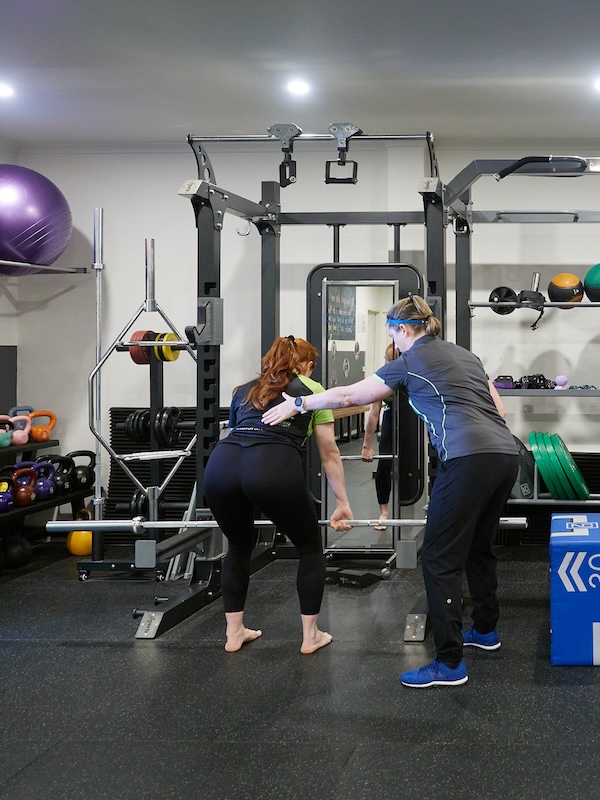The Truth About 3×10: Neuromodulation vs Physical Adaptation
Strength training – exploring more than 3 x 10
Strength exercise vs. Manual therapy
Over the years, we have discovered as a profession, that performing exercise, and in particular, strength exercise, has a positive effect on physicality as well as being a pain reducer.
This is a shift from what physiotherapy used to be, relying heavily on manual therapy; things like massage, mobilisations, manipulations, dry needling etc.
Now I am not here to poo poo these modalities. I am a firm believer that manual therapy has an important role for some patients, to reduce their pain initially, calm down their nervous system and get them in a better physical and mental state to start them on their journey towards physical activity. That said, we now have a few more tools in the toolbox to explore with our patients in the form of rehab.
Now if we bring our focus back towards strength training, let’s first explore some basic ideologies as to why it helps with pain.


Why does strength training help reduce pain?
Strength training addresses the root causes of pain by strengthening the structures that support your body, improving how force is absorbed and distributed during movement.
The four main concepts I will introduce are the following:
Strength training builds more muscular supply
Building more muscular supply can help actively take load, and offload passive structures such as ligaments and joints.
- From a physics concept, this makes sense as it will then reduce pain on potentially painful passive structures in the body.
Boosts Load Tolerance Across Muscles, Tendons & Joints
Strength training builds more load tolerance for both active structures such as muscle and tendon, as well as passive structures such as ligaments or cartilage.
Build neural pathways
Strength training can start to build neural pathways, through specific movement patterns, which can then be replicated in life / sport and help prepare us for physical activities that are less controlled.
Strength training has neuromodulating elements
- Neuromodulating basically means reducing nerve sensitivity which influences how we experience pain
- This is very similar to manual therapy – by applying modalities such as massage, we are reducing the tissues nerve sensitivity which ultimately gives us pain relief
- We can have both peripheral modulation as well as more central modulation
- There has been quite a lot of literature to support that especially with certain areas of the body such as the lower lack, this is the driver of why we achieve pain relief in strength exercise
Acute and sub acute application of exercise prescription to reduce pain
Now to draw out this concept further – I truly believe that physiotherapists and other allied health professionals are very good at the acute and sub acute application of exercise prescription.
If someone has had a calf flare up, we are able to settle the patient’s pain down with some soft tissue, perhaps some dry needling. We might throw in some calf raises and all of a sudden, the patient is getting better.
Now in my opinion, the reason for the reducing pain in clients in the situation above, has to do with the neuromodulating principle we discussed. We are giving them some loading exercise, and their tissue starts to desensitise.
The iconic 3 x 10 exercise prescription goes hand in hand with this.
But how do we actually start to reap the more physiological, muscle / neuromuscular adaptations to strength exercise and prepare our strength supply to avoid injuries in the future?
By broadening our exercise prescription and also building in more robust exercise and patterning.
Key Elements of Functional and Demanding Exercise
We need to consider all factors that are needed for demand exercise: yes, this can be basic strength/endurance exercise, but can also include:
- ACTUAL strength rep ranges; 1-5 reps
- Explosive movements such as box jumps or forward hops
- Plyometric movements such as pogos, drop jumps
- Coordination exercises such as lunges with perturbations, aqua bags
- Balance exercises such as single leg balance, walking tight rope
- Range exercises such knee over toe lunges, eccentric shoulder db rotation
- Motor patterning exercises / demand specific movements such as reverse lunge into triple extensions, landmine press and reaches
These are just a few exercises that we as professionals can explore.
I think it’s time to move away from basic neuromodulating exercises only, and into exercise that is going to actually change and build the physicality of an individual for long standing pain relief and injury avoidance.

Single leg balance
BOX JUMPS
PLYOMETRICS
BALANCE EXERCISE
AQUA BAGS
SINGLE LEG POGO
POGO TUCK
DOUBLE LEG POGO
Do you think you want to explore more dynamic rehab? Book in with one of our physios today!
This blog was written by Luke Waker, the Head of Physiotherapy / Senior Physiotherapist at Physio and Fitness Clinic, B Sc Physiotherapy (hons) – Monash University.
Luke is an Australian trained physiotherapist with over 17 years of experience within the fitness industry. He started his journey as a swim coach and over the years progressed through personal training, group training and then for the past 9 years, has been working as a physiotherapist.
Here at Physio and Fitness Clinic, we can assist you with your sports injuries, and build strength. Make an appointment with a physio today for physiotherapy and physio run pilates.
